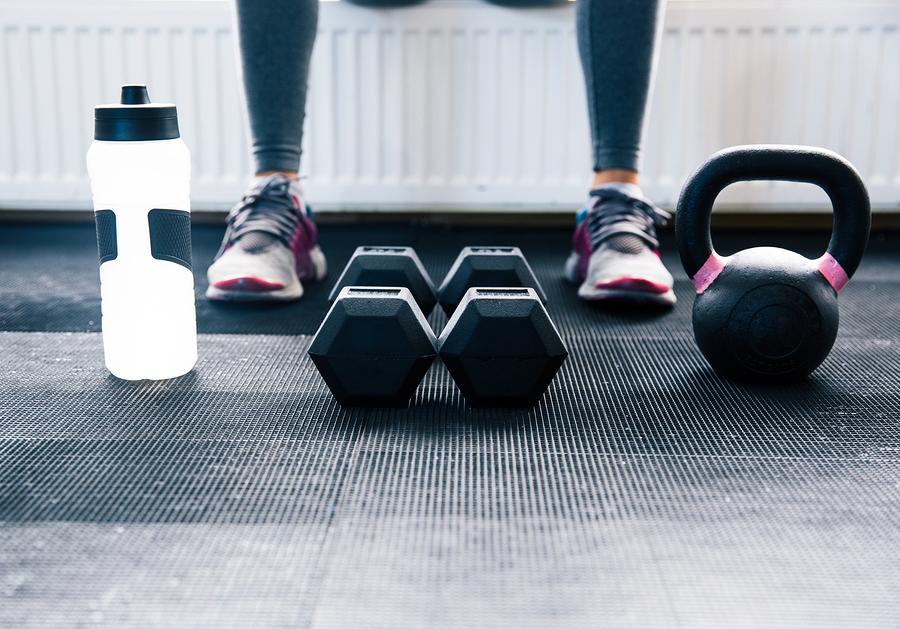Choosing to get fit and exercise at home with dumbbells is a great way to improve your strength while building your muscles and physique. Doing so helps to combat the need to go to the gym, which not only saves you time when it comes to your fitness, but it also saves you money too as you are not paying for a monthly gym membership!
When you lift weights you will be burning calories, which alongside a balanced diet can contribute to weight loss. If you have decided to get fit by lifting weights at home then it is essential that you choose the right dumbbells for your current fitness levels.
Getting Started
If you start out too heavy then you run the risk of injury. This could greatly impact the effectiveness and viability of your training in the long term. Furthermore, if you decide to continue training when you know you have an injury then you run quite a serious risk of long-term damage. This is something that you should always be careful to avoid. On the other end of that spectrum, if you lift weights that are too light for you then you are not really going to make any positive progress.
Ideally you want to pick a weight that is both manageable but also challenging. As your training continues, and the weight you started with becomes easier, then you can begin to increase the amount of repetitions and then start to increase the weight. This is a very gentle method for developing your training.
You essentially want to be working towards lifting heavier weights for higher numbers of repetitions, as this is where the benefits to your body will come from. You should never feel under any pressure to progress your weights faster than you feel able, and you will still be enjoying the benefits of a regular workout, even if you are continuing to use the same weights each time for a prolonged period.
Perfect Your Form
Once you have found which weight is going to be best for you to start from, it is advisable that you practice your form with moderately light dumbbells first. This will allow you to learn the optimum way to lift weights and how to hold the rest of your body as you do so.
This will also help to protect you against injury when you get started for real on the heavier weights. Additionally, this is a good way to determine what weight you should be using for your general training. If you cannot properly complete your set whilst maintaining the correct form, then this is a good indication that the weight you are using is too heavy.
As an example, if you begin with 5kg in order to practice your form, but find it difficult to do 20 repetitions with ease, then you should probably start slightly lower than this weight. If, on the other hand, this weight is no problem at all for you to do 20 repetitions of then you can try to do the same with a slightly heavier weight. Listen to your body and never try to push yourself too far too soon.
For the majority of weightlifting exercises, good form is considered to be having a slight bend at the knees, a straight back and your feet approximately hip-width apart. Your gaze should generally be straight ahead. This of course varies from exercise to exercise, but this is a good start point to be aware of.
Set Goals For Yourself
You have to ask yourself what you want to get out of your weight training in order to maximise your efforts for success. If you are primarily looking to build muscle, then it will be more effective to do a small number of repetitions with a heavy weight. However, if you want to increase your stamina and endurance then aim to do more repetitions with a lower weight.
If you want to improve your general fitness and do not have specific weight loss or body building aims in mind, then you can strike a balance between these two concepts.
Training at Home with Dumbbells
One downside to training with dumbbells at home is that you may find that you outgrow your weights quite quickly as you progress through your training. You are obviously going to start with a light set as you get used to this type of training, and then move up to heavier weights as your strength grows.
When you are working out in a gym you will have a wide range of weights available to you. But when you exercise at home you will have to purchase your own. If you are developing quite rapidly with your practice then the price of doing this could soon add up. For this reason it is a good idea to buy your dumbbells second hand and then sell them on, but only once you are sure you will not be training with them anymore as you move up to heavier weights.
In addition to training at home with dumbbells, you can also invest in a barbell set. This involves the use of a weight bench and just one barbell. You can then purchase the weights and add them to the barbell depending on the exercise that you are doing. The benefit of training with a weight bench and a barbell is that you only need one barbell and then you simply add more weights onto it, instead of having to purchase an entirely new product. Essentially your smaller weights can always come in useful as you get stronger!
Track Your Progress
It is a great idea to track your progress in a training diary so that you can see how your weight lifting efforts have developed over time.
Make a note of how many repetitions you did and at what weight each time you train. It is also useful to note down how easy or difficult you found each session and how you felt afterwards. Follow your workout with a healthy snack or protein shake and you will soon be on your way to your body goals!
References
1) https://www.nerdfitness.com/blog/2014/01/14/strength-training-101-where-do-i-start/
Related Posts
Cigarettes May Inhibit Inflammation Treatments
Axial spondyloarthritis, also known as AxSpa, is a chronic…










